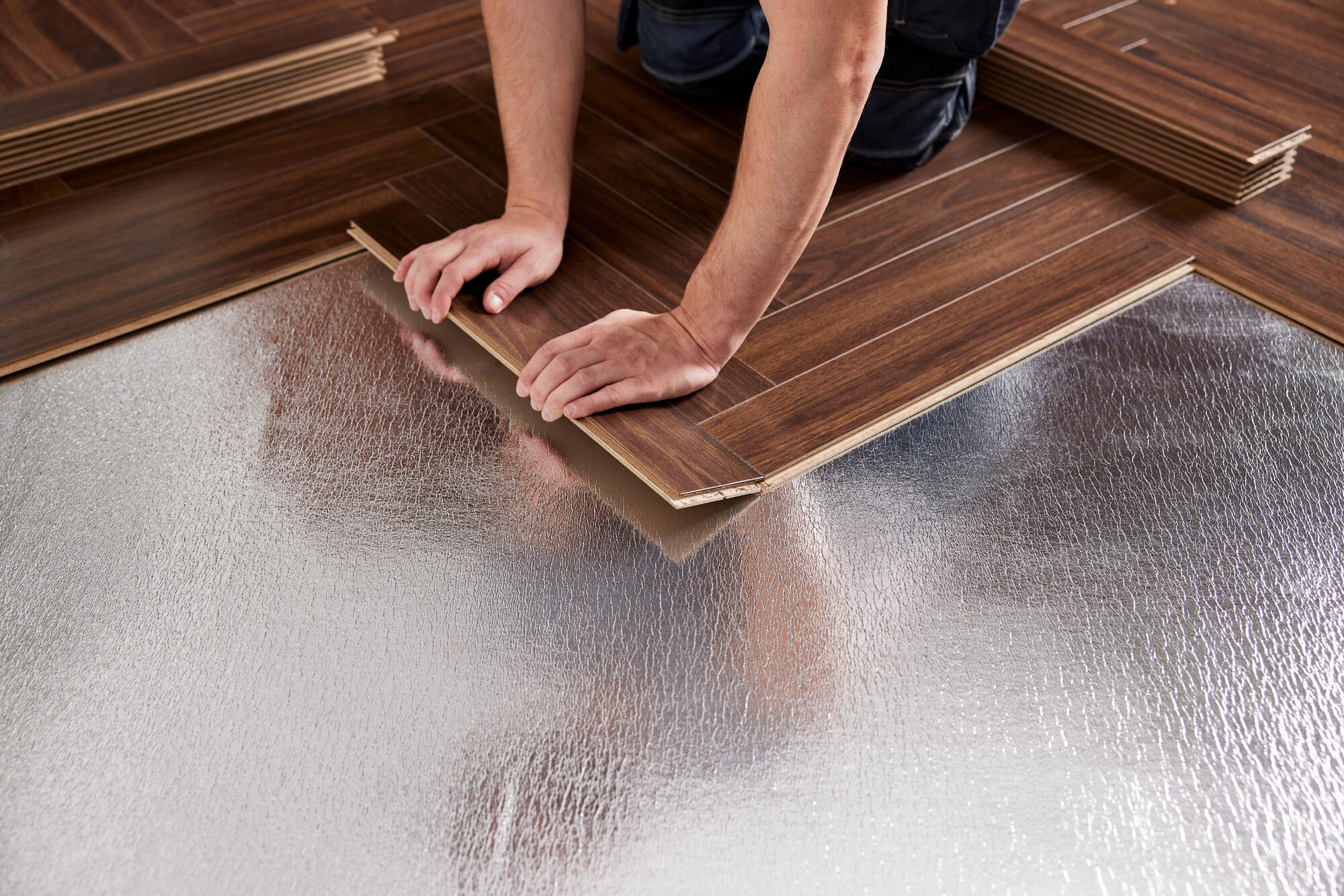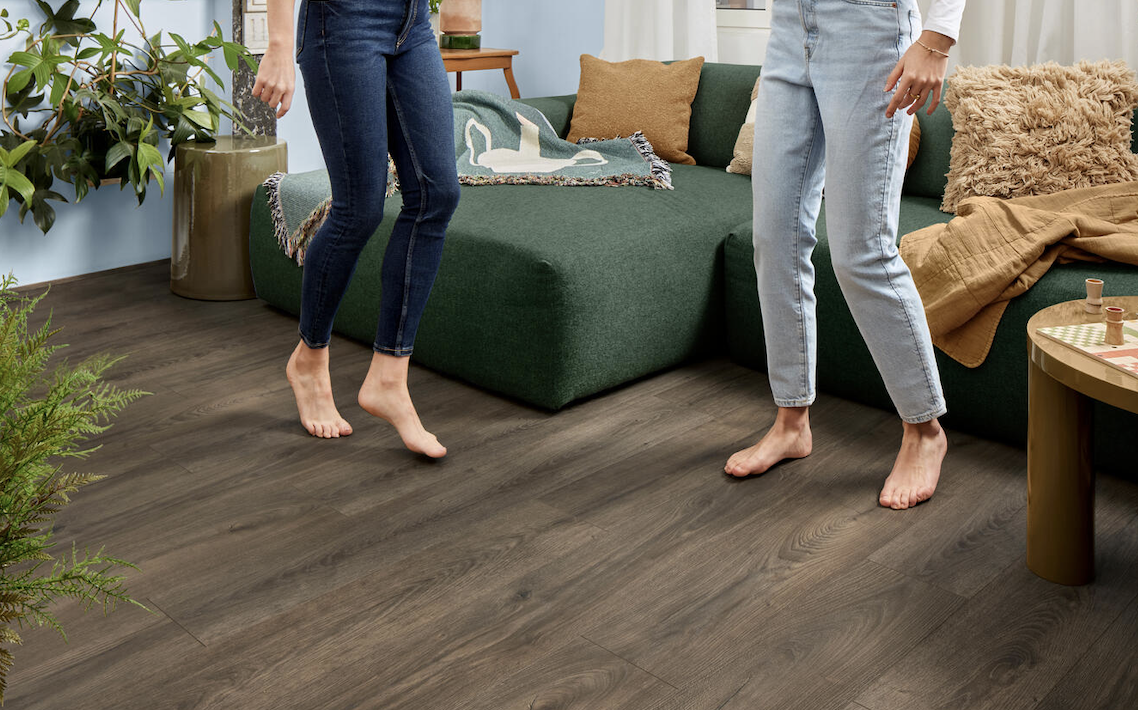Are you suffering from squeaking or creaking floors in your home? Unfortunately, this does not only occur with old floors; it can also happen with recently installed wooden or laminate floors. After all, wood is a living product that ‘moves’ depending on room conditions. Find out here what the possible causes are and read tips on how to tackle the problem.
Possible causes of a creaky floor
1. Unevenness
Before installing a subfloor, make sure it is completely free of dust and dirt. This is because any unevenness - no matter how minor - can cause the floor to move slightly, leading to squeaking and creaking.
Also, your floor may not be completely flat or rigid (hard). This is then often due to an incorrectly installed subfloor. The right kind of underlay is also important. So always use the underlay recommended by the flooring manufacturer of your chosen floor.
2. Problem with humidity and temperature in the room(s)
If the room where the floor is laid is occasionally too humid, i.e. more than around 60%, this can cause your floor to expand excessively. And too dry a humidity level is not ideal either, because the floor may shrink excessively. Here, we are talking about 40 % or less. Before you start installing your floor, you need the right climate so that it does n’t have to adapt to the ambient conditions your home during and after installation.
It is also possible that your floor will have to deal with an excessive temperature difference. This occurs, for example, when direct sunlight often falls on one part of the floor - – thus warming it up - – and not on another.

3. Insufficient clearance
Boards that are too close to doorways and walls do not have enough room to move and consequently become problematic over time. For most floor materials, one centimetre of clearance is sufficient.
If no expansion joint is provided between the floor and walls, the floating floor cannot move freely. Besides, when the floor runs across different rooms with no breaks in doorways, the different environmental conditions can affect the behaviour of your floor, resulting in creaks and squeaks.
4. A poorly installed floor
An improperly installed floor can also be the cause of unwanted noisese. We therefore recommend following the installation instructions carefully. You will find these instructions in your box or on the flooring manufacturer's website.
You can install your floor yourself or hire a professional installer. If you choose self-installation, it is important to read and understand the instructions carefully. Also watch the installation videos if they are available online.
If you opt for a professional installer, choose someone who is experienced in installing the type of flooring you bought. You can find an installer through the shop where you bought your floor, or through the flooring manufacturer's website.
Een verkeerd geïnstalleerde vloer kan ook de oorzaak zijn. We raden dan ook aan om de installatie-instructies nauwkeurig te volgen. Deze instructies vind je in de doos van je bestelling of online op de website van de vloerenproducent.
How can you fix a creaky floor?
In the best case scenario, you did everything necessary beforehand to prevent a squeaky floor:
- you let the floor acclimatise for 48 hours before installing it
- you ensured a completely even surface before installing your floor
- you used the right type of underlay recommended by the flooring manufacturer.
- you provided sufficient clearance between the boards and the walls and doorways
Is this not the case? Then the chances are that you will have to remove boards and tackle the basics to repair the creaky floor.
Is the above all okay? Then it may be due to humidity, temperature difference or a poorly laid floor. If so, first of all, place a humidity meter and thermometer in the room. That way, you can monitor the atmospheric conditions:
- Is it too humid in there? Turn up the heating, open the windows regularly and/or install a dehumidifier.
- Is it too dry? Use a humidifier or simply hang an evaporative tray on your radiators. Even indoor plants can have a positive impact on humidity.
- Is- Is there a big temperature difference between different parts of the room? Then try to equalise them by using fans, air conditioning, blinds, etc. Or provide breaks in the floor (expansion joints and profiles).
Laying a new floor yourself? Find all the info here, from choosing the right floor to laying and finishing.
Need specific advice for your floor?


.jpg?width=300&name=Overview%20image%20blog%20home_Myfloorstyle_gyant%20xl%20warm%20natural(398x344).jpg)
.jpg?width=300&name=Overview%20image%20blog%20home_Myfloorstyle_sunset%20boulevard(398x344).jpg)
.jpg?width=300&name=Overview%20image%20blog%20home_Myfloorstyle_excellence%20plus%20acc(398x344).jpg)